Best Bird-Watching Spots
Nature lovers flock to St. Pete-Clearwater to see the stunning birds that gather in parks and preserves along the Great Florida Birding and Wildlife Trail.
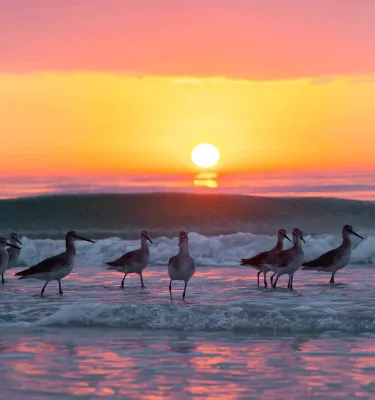
Seabirds at water's edge as the sun sets.
Florida boasts a 2,000-mile self-guided trail with 489 sites that promote bird-watching activities and conservation of Florida’s natural habitats. St. Pete/Clearwater’s trail sites are diverse - with mangrove swamps, slash-pine forests, beaches and estuaries - offering habitats for many bird species. There are 15 trail sites in the area, and while all are beautiful, a handful of them are a birder’s dream-come-true.
Brooker Creek Preserve, Tarpon Springs
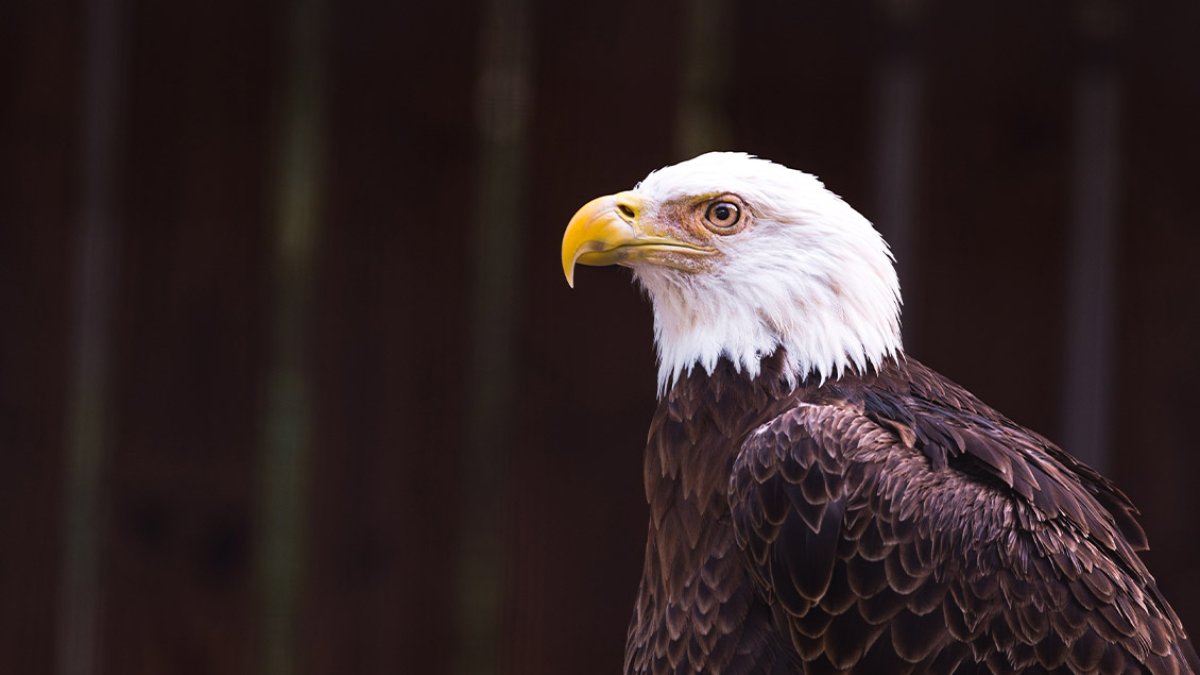
Many birds of prey, such as American bald eagles, osprey, hawks and owls call St. Pete/Clearwater home. Spot them at nature preserves such as Brooker Creek in Tarpon Springs.
This serene and stunning place is St. Pete/Clearwater’s largest natural area and a top-ranking birding and wildlife viewing destination. Habitats at Brooker Creek Preserve include fresh water, marshland and forest environments that are ideal for birds. Spot species such as purple martins, pine warblers, American white pelicans, bald eagles, white ibis and robins along the preserve’s scenic trails (and be on the lookout for wildflowers along the way, too). If you plan to visit on the second Saturday of the month, sign up for the guided “Birds of Brooker Hike.” If you come to explore on your own, remember that early morning is one of the best times to spot wildlife (the preserve opens at 7 a.m.). The trails close one hour before sunset.
John Chesnut Sr. Park, Oldsmar
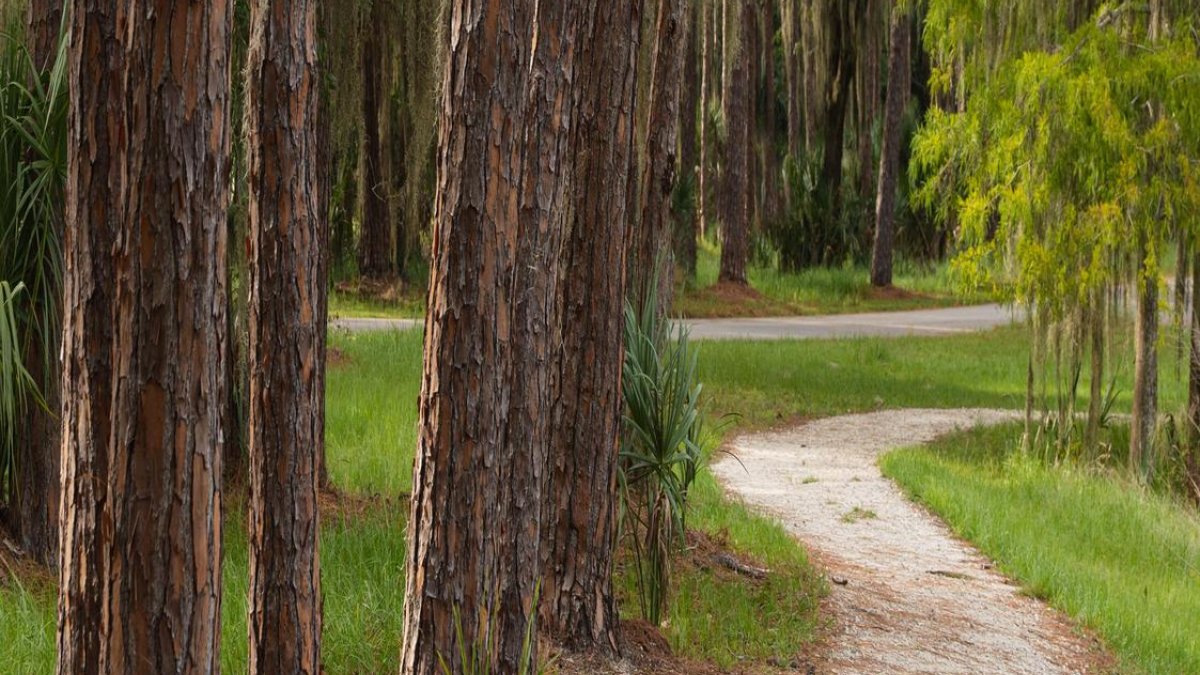
John Chesnut, Sr. Park in Oldsmar is known as a great place to spot wildlife, including birds and white-tailed deer.
Located on the shores of Lake Tarpon, John Chesnut Sr. Park offers opportunities for birding both on foot and by boat along self-guided hiking and paddling trails. Wading birds feed along the shoreline and migrating songbirds flock along the boardwalks - including nearly 30 species of warblers. It’s also possible to spot flyovers of short-tailed hawks and sharp-shinned hawks - and bald eagle sightings are common from August through May (keep your eagle eyes peeled). Other animal species such as alligators and gopher tortoises are frequently spotted, too.
Honeymoon Island State Park, Dunedin
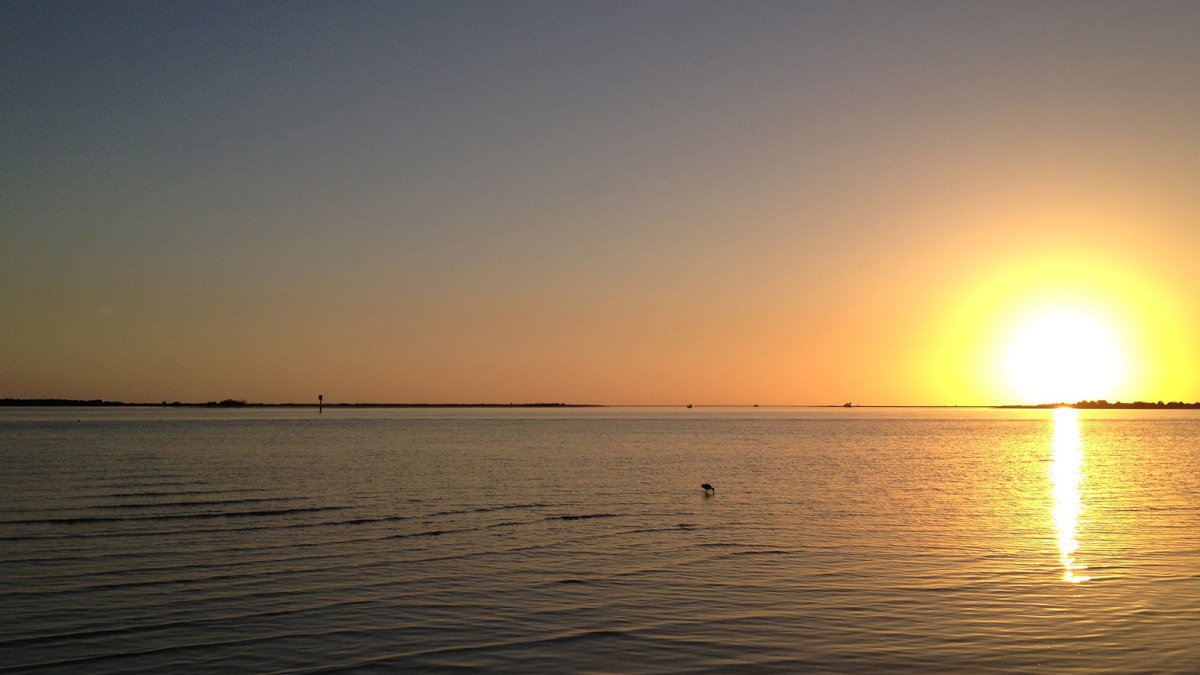
Head to Honeymoon Island State Park to explore nature trails, relax on the beach, go birdwatching, and watch the sunset.
With four miles of picturesque beaches, tidal flats, mangroves and other rich wildlife habitats, Honeymoon Island State Park is a gorgeous barrier island that draws a million beachgoers and wildlife enthusiasts every year. En route to the park, the Dunedin Causeway’s waterfront is filled with shorebirds. Once inside the park, the 2.2-mile Osprey Trail is one of the best places in the world to see nesting ospreys. You may also spot vireos, flycatchers and other migrating songbird species. The park’s Pelican Trail is a good place to see shorebirds such as American oystercatchers and snowy plovers.
Boyd Hill Nature Preserve, St. Pete
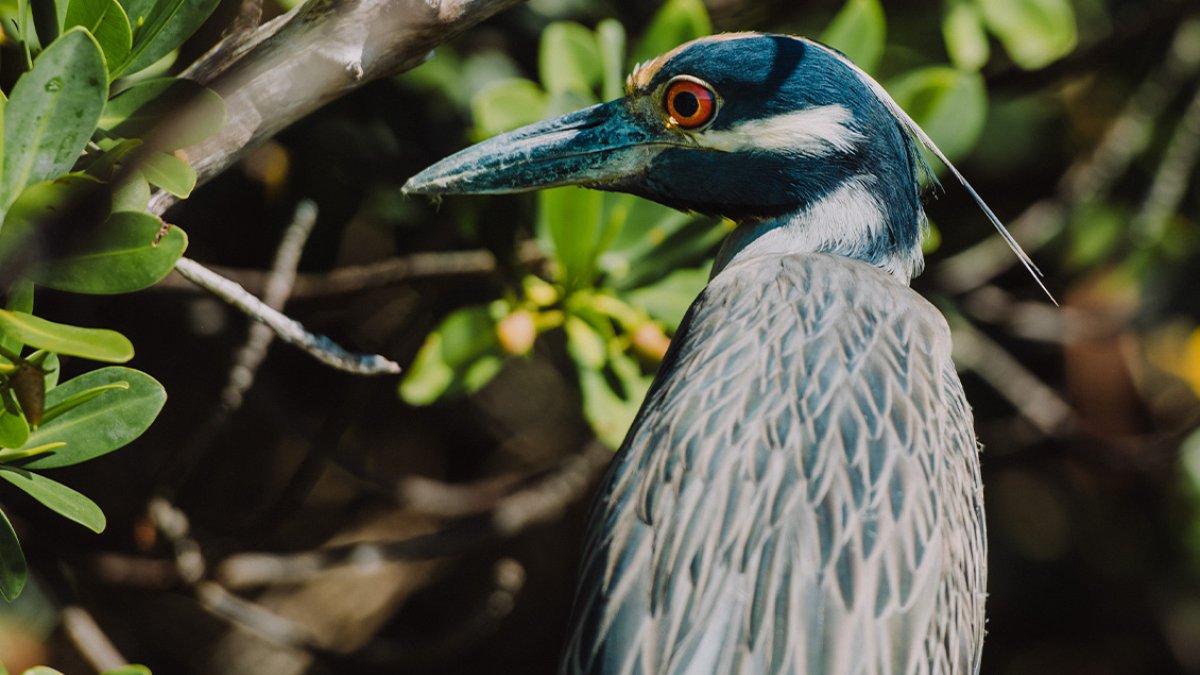
With its deep blue and gray plumage, the yellow-crowned night heron is mesmerizing as it stands along the shore in search of prey.
Family-friendly Boyd Hill Nature Preserve is home to six miles of trails and boardwalks that take you through hardwood hammocks, pine flatwoods, marshes and swamps - and there’s lakefront access, too. The most common bird sightings include downy woodpeckers, ospreys, green herons and eastern screech owls. But more rare species - such as ash-throated flycatchers, also make an occasional appearance. (Hey, you could be one of the lucky ducks to see one.) Before venturing out into the preserve, you might want to pick up a bird checklist at the park’s environmental education center. Be sure to check out the aviary with rehabilitated birds of prey, too.
Sawgrass Lake Park, St. Pete
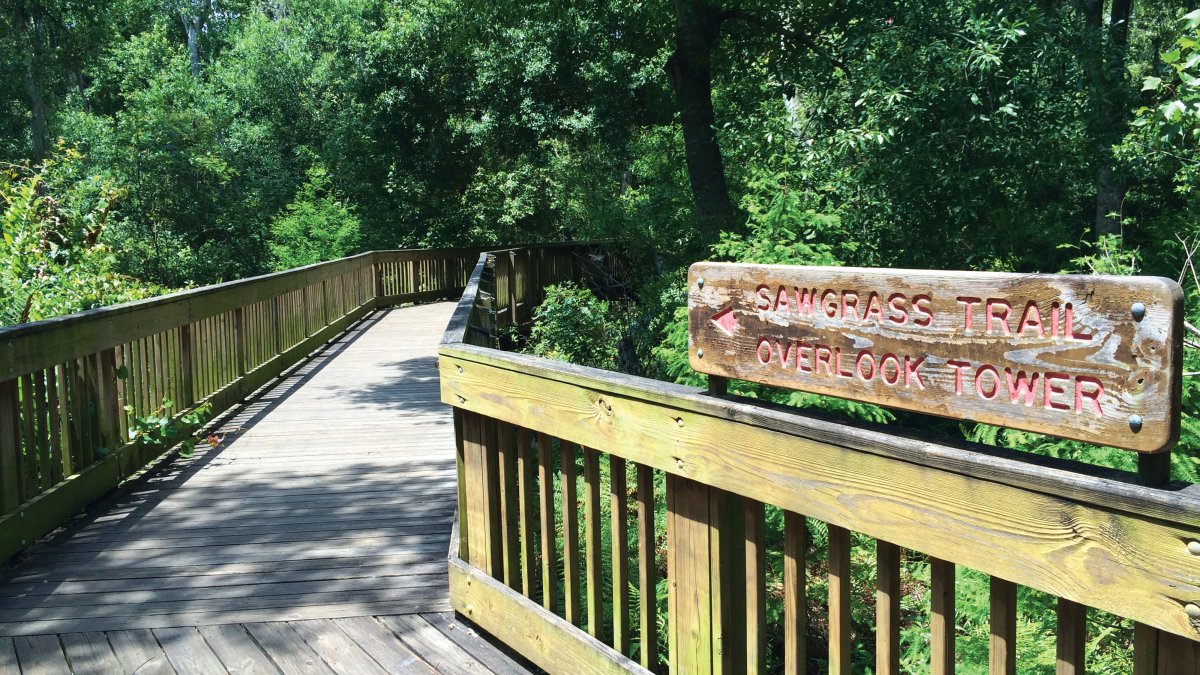
In Sawgrass Lake Park, wander along the park's boardwalks and trails, looking for resident and migrating birds.
At 400 acres, Sawgrass Lake Park is one of the largest maple swamps on Florida’s Gulf coast. The park is smack-dab in the middle of a city neighborhood, but inside, it feels like an oasis designed to attract birds (in fact, more than 200 species have been seen here). Sawgrass Park offers boardwalks and trail loops where you may spot little blue herons, white ibis, wood storks and many other bird species. Different seasons bring different birds - so keep coming back.
Fort De Soto Park, Tierra Verde
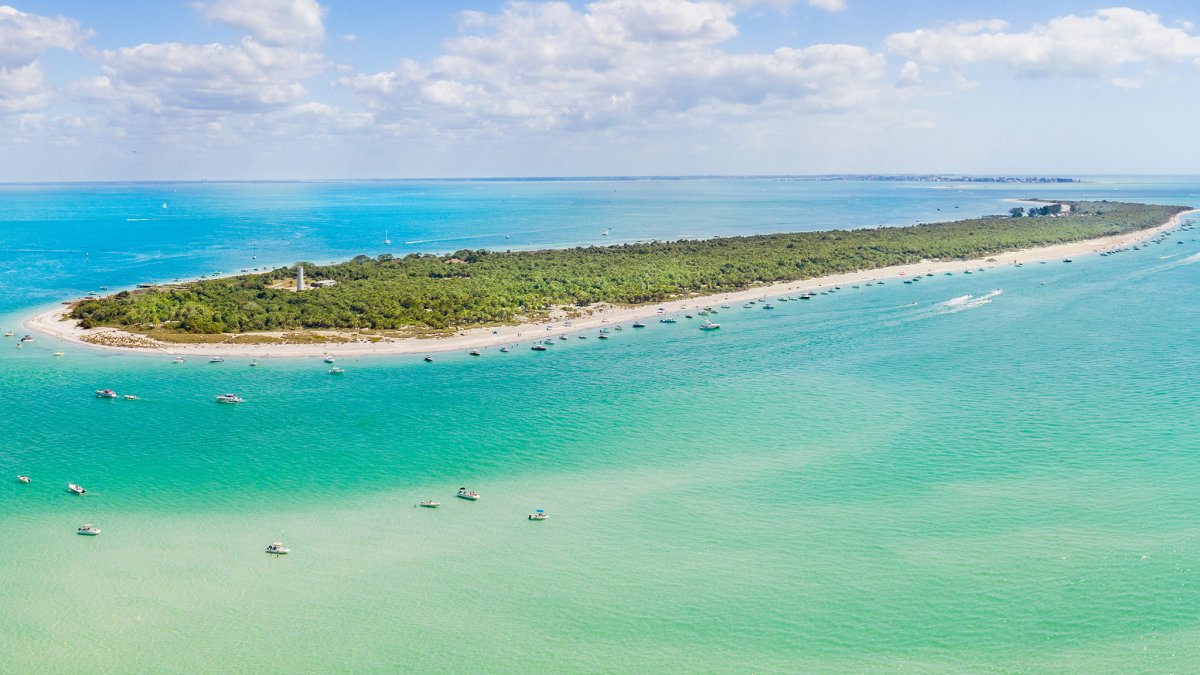
Catch a ferry to Egmont Key, where pristine shorelines, thriving wildlife, nature trails and the mysterious ruins of a fortress are just some of what awaits you.
With pristine beaches, boat launches and trails for biking, hiking and paddling, Fort De Soto Park offers plenty of ways to enjoy its amazing coastal habitats, which include mangroves, wetlands, mud flats, palm hammocks and sandy beaches. This Great Florida Birding Trail site is among the most popular birding spots in the country - no wonder, since more than 330 bird species have been documented by ornithologists here. Stop by the visitor center and grab a pair of loaner binoculars and a bird finding guide and take photos along the way. You just might spot a roseate spoonbill or two (Florida’s true native pink bird, rather than the flamingo).
Find all 15 Great Florida Birding Trail sites in St. Pete/Clearwater here.
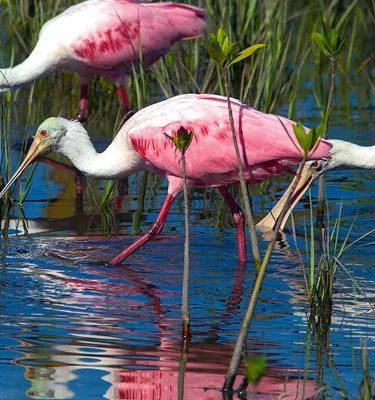

Roseate Spoonbill
When you see a roseate spoonbill wading in shallow waters, you’ll feel like you’ve discovered a rare treasure. Spoonbills sport lovely pink feathers with a bit of pale orange on their tails. The species’ name comes from its flat spoon-shaped bill.
Roseate Spoonbill
When you see a roseate spoonbill wading in shallow waters, you’ll feel like you’ve discovered a rare treasure. Spoonbills sport lovely pink feathers with a bit of pale orange on their tails. The species’ name comes from its flat spoon-shaped bill.
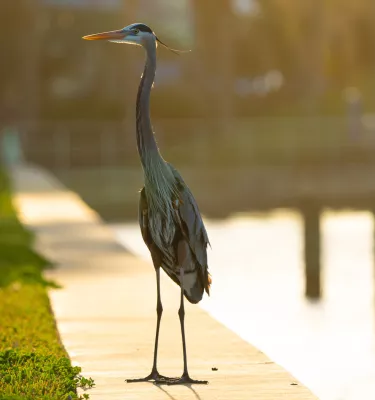

Great Blue Heron
This mostly gray-blue bird is large and lanky and sports a dagger-like bill that comes in handy for stalking fish in shallow wetlands. Don’t mistake its majestic poise for idleness - this bird is always on the lookout for prey and waits patiently for the catch.
Great Blue Heron
This mostly gray-blue bird is large and lanky and sports a dagger-like bill that comes in handy for stalking fish in shallow wetlands. Don’t mistake its majestic poise for idleness - this bird is always on the lookout for prey and waits patiently for the catch.
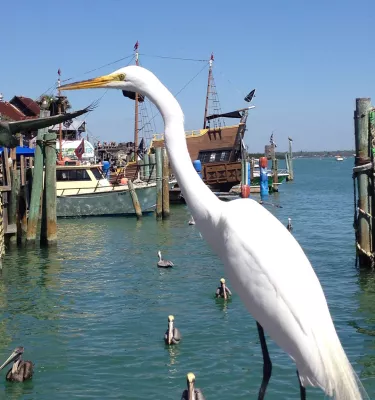

Snowy Egret
Who knew a bird could look both comical and elegant at the same time? Pure white feathers and a black beak give it a classic look, while its bright yellow feet are reminiscent of rain boots (which makes sense, since snowy egrets are often in water).
Snowy Egret
Who knew a bird could look both comical and elegant at the same time? Pure white feathers and a black beak give it a classic look, while its bright yellow feet are reminiscent of rain boots (which makes sense, since snowy egrets are often in water).
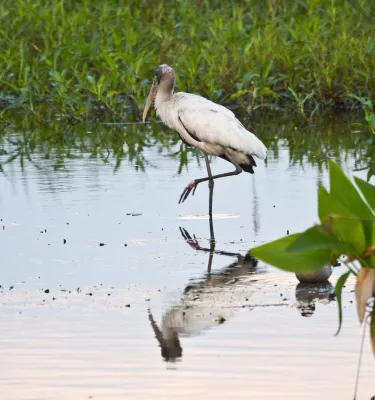

Wood Stork
This leggy, black-and-white bird has an almost prehistoric look about it. Its thick, sharp drooped bill is a tell-tale characteristic, and it hints at the bird’s main activity - foraging for fish. Photo Source: Adobe Stock
Wood Stork
This leggy, black-and-white bird has an almost prehistoric look about it. Its thick, sharp drooped bill is a tell-tale characteristic, and it hints at the bird’s main activity - foraging for fish. Photo Source: Adobe Stock
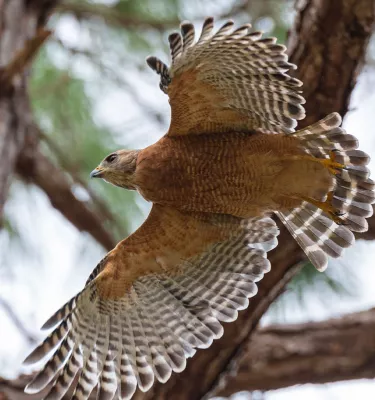

Red-Shouldered Hawk
Seen in forested areas, this species of hawk hunts from perches, surveying the scene from high places. Its body’s rich orange barring and bold black-and-white checkerboard wing pattern are so striking, it’s hard to take your eyes off it when seen in flight.
Red-Shouldered Hawk
Seen in forested areas, this species of hawk hunts from perches, surveying the scene from high places. Its body’s rich orange barring and bold black-and-white checkerboard wing pattern are so striking, it’s hard to take your eyes off it when seen in flight.
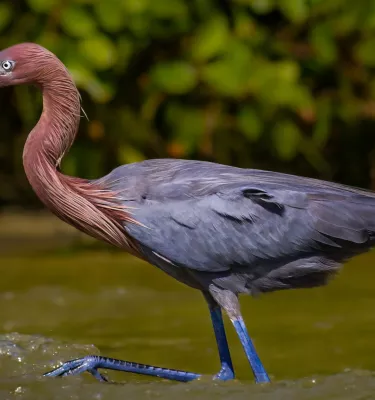

Reddish Egret
Found near the coast in salt marshes and mud flats, this bird is super-entertaining to watch as it sprints, jumps, spins and holds its wings up while searching for fish in the shallows. Photo Source: Adobe Stock
Reddish Egret
Found near the coast in salt marshes and mud flats, this bird is super-entertaining to watch as it sprints, jumps, spins and holds its wings up while searching for fish in the shallows. Photo Source: Adobe Stock
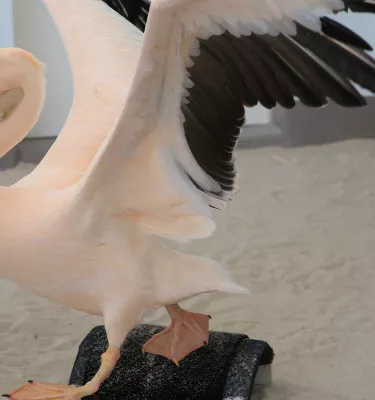

American White Pelican
You can hardly miss a bird this large and beautiful. Its white body, black wingtips, curvaceous neck and orange bill make it a stand-out on every birder’s life list. This pelican soars and rests in flocks, which just makes spotting this species even more exciting.
American White Pelican
You can hardly miss a bird this large and beautiful. Its white body, black wingtips, curvaceous neck and orange bill make it a stand-out on every birder’s life list. This pelican soars and rests in flocks, which just makes spotting this species even more exciting.
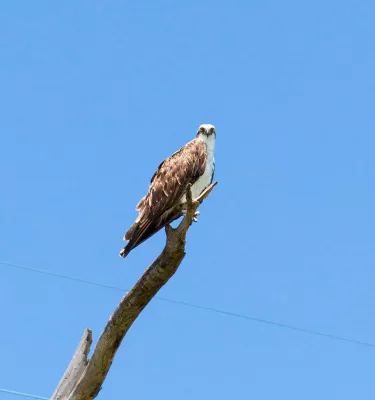

Osprey
This mostly white raptor cruises over lakes and coastal waters hunting for fish. Its large size, white head and belly, and dark brown back will grab your attention, but the huge stick nest it builds is pretty amazing - look for nests on channel markers, utility poles and tall platforms near water.
Osprey
This mostly white raptor cruises over lakes and coastal waters hunting for fish. Its large size, white head and belly, and dark brown back will grab your attention, but the huge stick nest it builds is pretty amazing - look for nests on channel markers, utility poles and tall platforms near water.
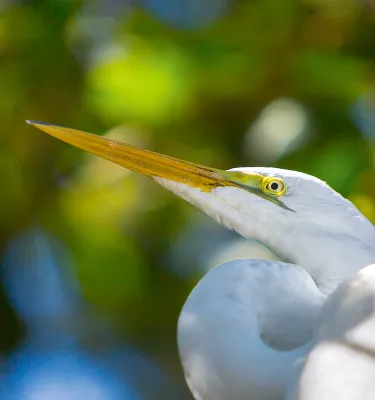

Water birds of every color and size, such as this Great White Egret, can be seen along the beaches and bays of St. Pete/Clearwater.
Water birds of every color and size, such as this Great White Egret, can be seen along the beaches and bays of St. Pete/Clearwater.
Protecting the Birds
The St. Pete/Clearwater area is one of the few places in southwest Florida where “beach-nesting” birds nest. Each year, during the summer months, terns, plovers, skimmers, sandpipers and other shorebirds lay their small, well-camouflaged eggs, then raise the chicks in hard-to-see nests right on the sand.
You can help their chicks survive by keeping your distance from nesting birds. If the birds seem agitated, you’re too close. Some beaches will have marked nesting areas - but, on others, you’ll need to be watchful.
